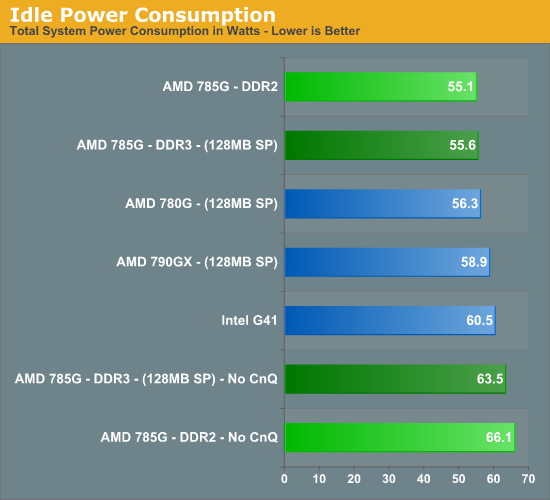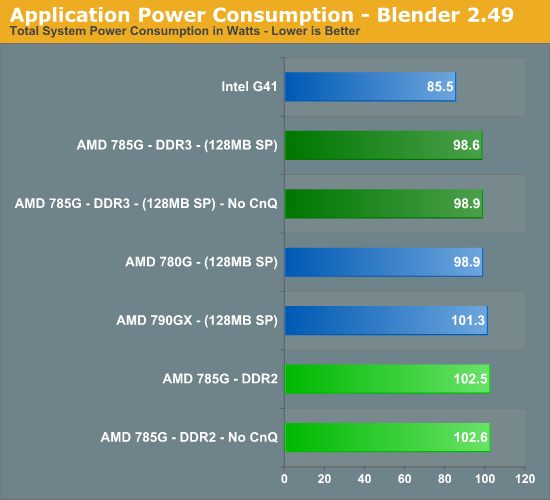AMD's 785G Chipset - Revolutionary or Evolutionary?
by Gary Key on August 4, 2009 5:00 AM EST- Posted in
- Motherboards
Power Consumption testing on the AMD platforms is always a hit or miss event. Either all the stars are aligned, more like the BIOS and driver sets are matched perfectly, or we enter the black hole known simply as Cool-n-Quiet. We had more problems getting CnQ to work properly on our early review samples than California does getting a balanced budget in place. Honestly, we have to wonder just how hard it can be to get the BIOS code in this area to stay consistent.
The reason we mention this is that just about every board had a problem with it. The first BIOS works but something else needs tuning, the second BIOS breaks CnQ, then the third fixes it, and the fourth revision breaks it again. On and on it went until Friday when not only did solid BIOS releases appear but also drivers that matched up with them.
That said, AMD has made further improvements in the PowerPlay technology utilized on the 785G. The stream processors normally run at 500MHz under full load, but PowerPlay now constantly adjusts clock speeds based on GPU utilization rates. In fact, the core will scale down to 60MHz when idling. In addition, the internal clocks inside the 785G will scale dynamically to save power regardless of voltage settings.
We have already looked at power consumption in individual tests. This time we are measuring total system power consumption, except for the monitor and A/V equipment, at the wall using a Watts Up Pro power meter. Our results were taken at idle and while rendering a large scene with Blender 2.49 x64. We measured with all power management options enabled except on the AMD systems were we also list “No CnQ” results. Windows 7 is set to balanced mode in all of our tests.
Our Gigabyte 785G DDR2 board required that we set CoreVid manually as it would default to 1.392V with our Athlon II X2 250 processor instead of 1.315V. We set voltage to 1.350V, which resulted in a true reading of 1.332V, still higher than default. This will affect the load numbers as CnQ properly set idle voltages to 0.920V.


In the idle test, both of the 785G boards pull the fewest watts. The G41 looks like a gas guzzler compared to the other boards although an idle rate of 60.5W is nothing to get upset about. Once CnQ is disabled, the 785G boards draw about 18% more energy on average.
The tables are turned in the load test. The Intel G41 system is 4% slower in performance in this title compared to the AMD 785G platforms, but uses 14% less energy coming across the finish line. You can either take the energy savings and wait a little longer or get the task over with sooner depending on your work habits. We prefer less time but do not want another iceberg lecture from Al Gore.










43 Comments
View All Comments
R3MF - Wednesday, August 5, 2009 - link
^ bump ^R3MF - Thursday, August 6, 2009 - link
^ bump ^dragunover - Friday, August 7, 2009 - link
Screw you and you bumps.